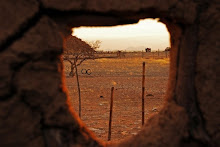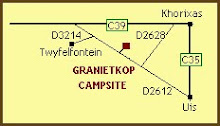 Flag
Flag
Overview
Namibia, situated along the southern western coast of the African continent, is truly a land of remarkable contrast with a land surface of 824 269 square kilometers, it is nearly four times the size of Great Britain.
Despite its size, it is one of the most sparely populated countries in Africa with an estimated population of 2 million people. The north central part of the country is the most densely populated area with an average of 26 people per square kilometer, more than ten times of the national average.
Climate
The small population is due to the fact that Namibia is the most arid country south of the Sahara with an annual average rainfall that varies from a meager 10 mm along the coast to 700 mm in the northeast. About 55 % of the country is classified as either Arid or extremely Arid. The national average rainfall is 270 mm a year, expect for the far south which is a winter rainfall area and more than 70 % of the country’s rainfall is recorded between December and March.
Namibia is a country of blue skies and a pleasant climate, the summer months are hot and temperatures of 35 degree or higher are common in the south and in the north of the country.
Winter days are pleasant, but the minimum temperature can drop to below zero in mid winter. Fog is a common occurrence along the coast, but currently lifts around mid morning and settles again in the afternoon.
LandscapeThe country’s landscape is kaleidoscope-changing. From the Namib with its sand dunes at the sea in the west to teak woodlands and waterways in the northeast. The Namib Desert in the west and the Kalahari Desert in the east account for 22 % of the country’s surface, while savanna type vegetation are characteristic of 58 % of the Namibian landscape. The remaining 22 % is represented by the African tree-savanna and woodland in the far north and northeast.
People
Namibia’s people are divers; ranging from the pastoral Himba in the northwest, the San in the east. Tall of stature, Himba men somewhat resemble with the Masai of the east of Africa, while the woman cover their bodies in the red ochre. Culturally they form part of the Herero people in the east. The San no longer pursue an exclusively hunter-gather existence, but are struggling to adapt to a new way of life.
The major population groups are the Ovambo, which consists of eight cultural groups. The Kavango people consist of five cultural groups. Further groups are the Damara, Nama and Herero. Smaller groups include the Mafwe and Masubia in the Caprivi, the Busters, San, Coloured, Tswana and the White of European descent.
History: Colonization & Independence
With a history after the arrival of the major colonist, colonize by Germany in 1884, thirty years under the German rules but things just changed after the First World War in 1918 when Namibia became administrated by South Africa from 1917 up to the day of independence.
Between 1966 and 1989, a liberation movement called SWAPO (south west Africa people organization) emerges with the aim to fight the South Africa rule in Namibia to the bitter end. With its wing called PLAN (people liberation army of Namibia) armed struggle against South Africa which finally led to the implementation of the united nation Resolution 435 on April 1st 1989 and one year later to independence of the country. Namibian became independent on March 21st 1990. While only four years later Walvis Bay enclave was reintegrated on March 1st 1994.
Administration
For the administration purpose the country has been divided into 13 regions, administrated by Regional Councils. The bicameral Parliament consist of the National Assembly which has 72 MPs elects on proportional basis every five years and six Nominated MPs, and the 26 member of the National Council.
Economy
Namibia is one of the top Diamond producing countries in the world while Uranium, Tin, Copper, Lead and Zinc are the important minerals. The Agricultural, Fishing and Mining industries account for more than 25 % of the country GDP, Tourism is the major economic activity.












